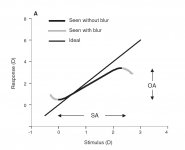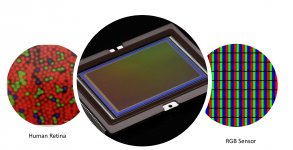Omid,Regarding the Home and Pool study, you don't have to believe them.
I am reasonably convinced that the concept of "Instrument Myopia" is humbug.
It seems that you have just edited out your suggestion of testing with a camera, but I have nevertheless performed the test.
I set up my 8x56 Swarovski SLC on a tripod and focussed on a license plate at 75 m. I repeated the test on a closer object, but I think we are at least in agreement that the object distance is immaterial and that the virtual image distance for any one user will be consistent.
On a second tripod I placed the f/1,8 85 mm objective of a single lens reflex camera behind the binocular's eyepiece. The 85 mm lens, having somewhat reduced depth of field has an extended distance scale marked at infinity, 20 m, 10 m, 7 m, 5m and so on down to 0,85 m.
Wearing glasses for both binocular and camera focus I achieved camera focus at 8 m, i.e. my personal virtual image distance, which is fairly consistent with my glasses prescription, which was established at 6 m (20 ft).
John
PS: "Instrument myopia" of -1 dioptre, i.e. a focus setting of 1 m on the camera lens would have required 105 mm of rotation from infinity. The 8 m setting required a mere 13 mm!
Last edited:








